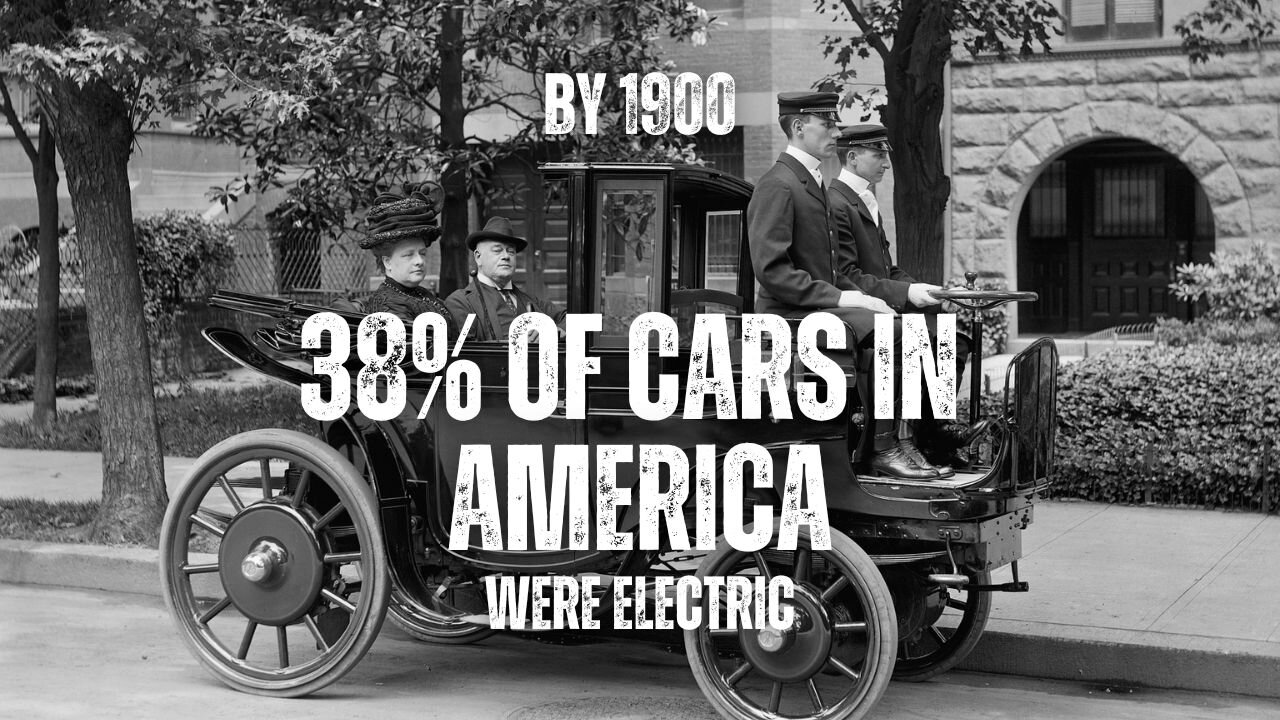Premium Only Content

By 1900, 38% of cars in America were electric! Wanna know how they were powered & charged?
According to historical records, around 38% of cars in the United States were electric in the late 1800s, particularly around the turn of the century, making them the most popular type of vehicle at the time.
This period is considered the first "golden age" of electric vehicles due to their widespread use, particularly in urban areas where charging infrastructure was more accessible.
Located in Chicago, Illinois, the Woods Motor Vehicle Company was an American company that produced electric cars. The business was open from 1899 till 1916. At a time when electric automobiles were becoming increasingly popular, Woods Motor Vehicle Co. was renowned for manufacturing high-class electric vehicles.
Introduced in 1915, the Woods Dual Power model was one of their noteworthy innovations. This car had an internal combustion engine and an electric motor, making it a hybrid. The Dual Power's ability to switch between the two power sources was a significant technological advancement at the time.
German-Russian engineer and physicist Moritz Hermann von Jacobi, sometimes known as Boris Jacobi, was born in Potsdam, Prussia, in 1801. He is well known for having made groundbreaking contributions to the development of the electric motor.
The first electric motor was created by Jacobi in 1834, and it was able to carry out practical mechanical tasks. This motor achieved a performance world record that was unbroken for four years until it was enhanced by Jacobi himself in 1838. His motor was noteworthy because it went beyond simple experimental apparatus and showed how electric motors may be used in real-world applications.
Andrew Gordon was a Benedictine monk, physicist, and inventor from Scotland. He was born George Gordon on June 15, 1712, in Cofforach, Forfarshire. He is most recognized for having invented one of the first electric motors about 1744 and for his groundbreaking work in the field of electricity.
Gordon received his education in Regensburg, Bavaria's Benedictine Scottish Monastery, where he majored in theology and philosophy. Later on, he was appointed as a philosophy professor at Erfurt University. The electric whirl, an electrostatic reaction motor, and the electric chimes—which are sometimes falsely credited to Benjamin Franklin—are among his noteworthy inventions in the field of electricity.
SOURCE
Jared Boosters
-
 1:35
1:35
The Aquarius Bus
1 month agoHuh? 400-ft. Deep Salt Mine with Carved Balconies Dug During the Middle Ages!
773 -
 LIVE
LIVE
Tundra Tactical
2 hours agoTundra Nation Live : The Worlds Okayest Gun Live Stream
620 watching -
 17:06
17:06
Professor Nez
33 minutes ago🚨BREAKING: Elon Musk to BUY MSNBC!? Dems STUNNED by Brian Williams’ Viral Video!
-
![If You Smell LALALALA What CHiLi IS COOKING!!... #RUMBLETAKEOVER [Overwatch 2]](https://1a-1791.com/video/s8/1/e/s/X/3/esX3u.0kob-small-If-You-Smell-LALALALA-What-.jpg) LIVE
LIVE
CHiLi XDD
2 hours agoIf You Smell LALALALA What CHiLi IS COOKING!!... #RUMBLETAKEOVER [Overwatch 2]
262 watching -
 LIVE
LIVE
Delnorin Games
3 hours ago🔴 Live - Star Citizen
355 watching -
 1:39:44
1:39:44
HELMET FIRE
4 hours agoDEADROP IS BACK!
66.7K6 -
 10:03
10:03
Tundra Tactical
6 hours ago $1.04 earnedBrandon Herrera Vies Bid for ATF Director!
35.5K5 -
 22:01
22:01
DeVory Darkins
1 day ago $3.36 earnedHakeem Jeffries SHUTS DOWN The View as Matt Gaetz Speaks out
36.4K81 -
 2:02:54
2:02:54
Mally_Mouse
5 hours agoLet's Play!! - Spicy Saturday
24K -
 1:33:06
1:33:06
Slightly Offensive
6 hours ago $2.61 earnedAre You Ready for What's Coming Next? | Just Chatting Chill Stream
42.7K29